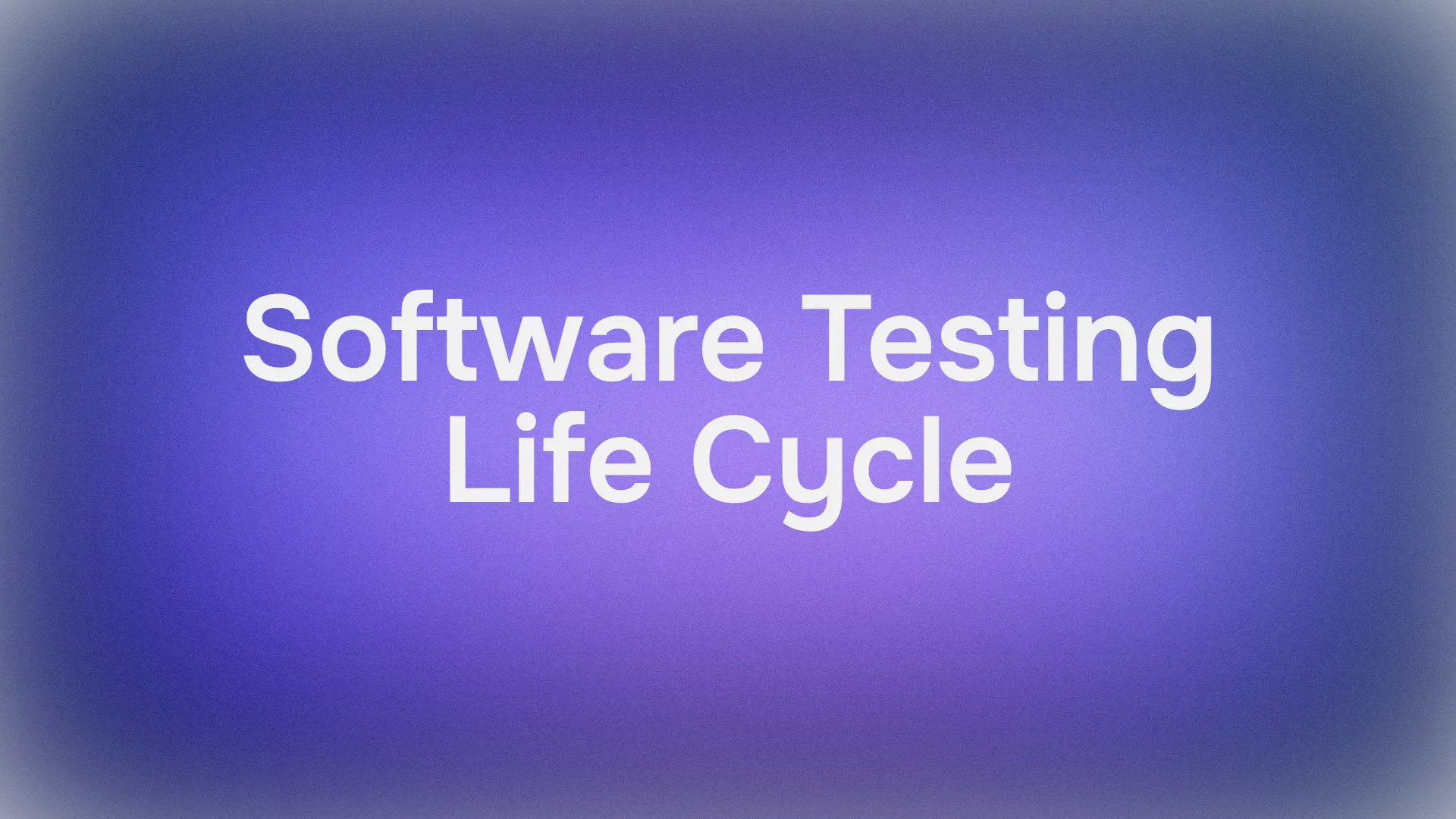If you need to process, analyze, or serve local files through your Model Context Protocol (MCP) server, you're in the right place. This guide will show you how to securely access, read, and manipulate local files while leveraging your MCP server's capabilities—whether you're building a document processing tool, a file-based API, or integrating local data with LLMs.

We'll cover file system permissions, efficient file handling, and security best practices to ensure your MCP server interacts with local storage safely and effectively. Let's dive in!
What is MCP and Why Use It?
The Model Context Protocol is an open standard that allows AI assistants like Claude to interact with various data sources and tools. It offers several key benefits:
Universal Access: A single protocol for AI assistants to query and retrieve data from various sources.
Secure, Standardized Connections: Handles authentication, usage policies, and standardized data formats, replacing ad-hoc API connectors.
Sustainability: Fosters an ecosystem of reusable connectors, allowing developers to build once and reuse across multiple LLMs.

Why Connect Claude to Local Files?
Connecting Claude to your file system unlocks transformative productivity benefits:
1. Intelligent Document Processing:
- Summarize reports (
"Extract key insights from Q2_Financials.docx") - Analyze structured data (
"Convert this CSV into a bullet-point summary") - Cross-reference information (
"Compare changes between draft_v1.txt and draft_v2.txt")
2. Automated File Management:
- Organize files (
"Move all PDFs from Downloads to Documents/Invoices") - Batch rename (
"Prefix all screenshots with '2024-' in chronological order") - Clean up storage (
"Delete temporary files older than 30 days")
3. Enhanced Development Workflows:
- Code refactoring (
"Optimize this Python script for better memory usage") - Documentation generation (
"Create a README.md for this project folder") - Configuration management (
"Update all .env files with these new API keys")
Prerequisites
Before you begin with the Filesystem MCP Server, ensure you have the following:
Claude Desktop App: Download and install the Claude Desktop App which is compatible with your operating system (available for macOS and Windows).
Node.js: Verify that Node.js is installed on your system. Open your command line and run node --version. If Node.js is not installed, download it from nodejs.org.
Basic Coding Knowledge: Familiarity with basic command-line operations and editing configuration files.
File System Permissions: Ensure that the currently logged-in user on your local machine has the correct Read/write permissions to access the target files and directories you would like to work with.
Step 1: Install and Configure the Filesystem MCP Server
We'll be using a pre-built Filesystem MCP Server, which allows Claude to read, write, move, and search files on your computer.
Locate the claude_desktop_config.json file:
1. Open the Claude Desktop App and go to Settings.
2. In the Settings pane, navigate to the "Developer" tab. You'll find an "Edit Config" button there.
3. Clicking "Edit Config" will take you to the location of the claude_desktop_config.json file:
>> macOS:
~/Library/Application Support/Claude/claude_desktop_config.json
>> Windows:
%APPDATA%\Claude\claude_desktop_config.jsonModify the claude_desktop_config.json file:
Open the claude_desktop_config.json file in a text editor. Replace the entire content of the file with the following code, making sure to replace "username" with your actual computer's username:
{
"mcpServers": {
"filesystem": {
"command": "npx",
"args": [
"-y",
"@modelcontextprotocol/server-filesystem",
"/Users/username/Work", // Least-privilege directory
"/Users/username/Projects" // Explicit allow-list only
],
"restrictions": {
"maxFileSizeMB": 10,
"allowedExtensions": [".txt", ".md", ".csv"]
}
}
}
}Important: The paths specified in the "args" array determine which directories Claude will have access to. Ensure these paths are valid and point to directories you want Claude to be able to access and modify. You can add more paths as needed.
Key Considerations:
- Principle of Least Privilege: Only include necessary directories.
- Extension Whitelisting: Prevent accidental binary file modifications.
- Size Limits: Avoid memory issues with large files.
Step 2: Understanding the Configuration File
The claude_desktop_config.json file tells Claude which MCP servers to start every time the application launches. In this case, we're adding a server called "filesystem" that uses the Node npx command to install and run @modelcontextprotocol/server-filesystem. This server provides Claude with access to your file system. If you had previously configured any other MCP Server's to your Claude Desktop App, then you should find their configurations in this file as well.
Command Privileges
It’s crucial to understand that Claude will run the commands in the configuration file with the permissions of your user account, granting it access to your local files. Only add commands if you fully understand and trust the source.
Step 3: Restart Claude
After updating the claude_desktop_config.json file, you must restart the Claude Desktop App for the changes to take effect.
Step 4: Verify the Installation
Upon restarting Claude, you should see a hammer icon in the bottom right corner of the input box. Clicking this icon will display the tools provided by the Filesystem MCP Server:
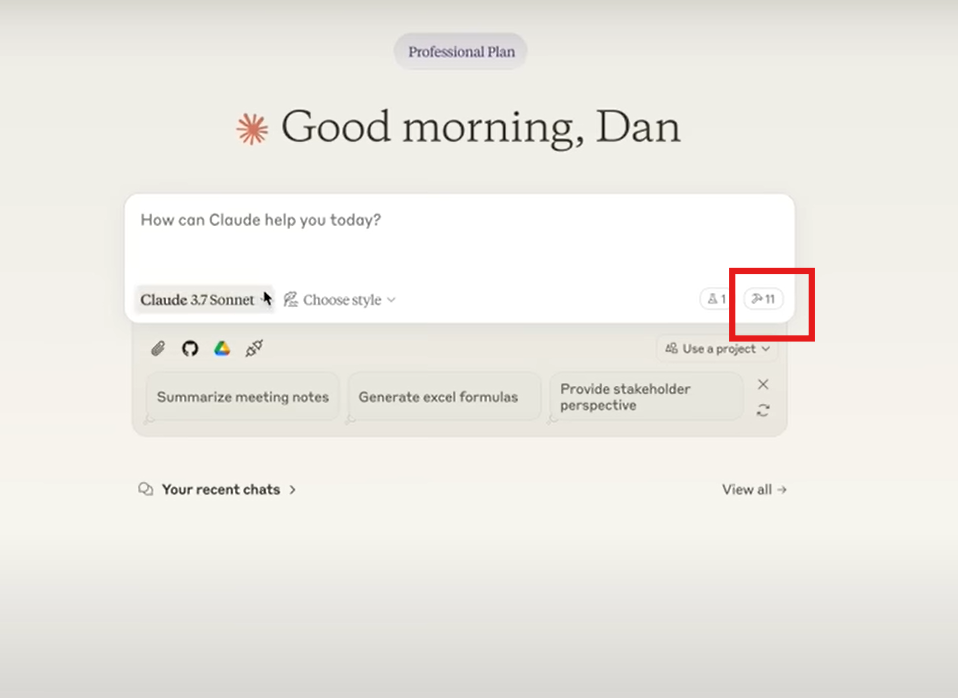
Clicking the Icon should review the available tools of the Filesystem MCP Server.
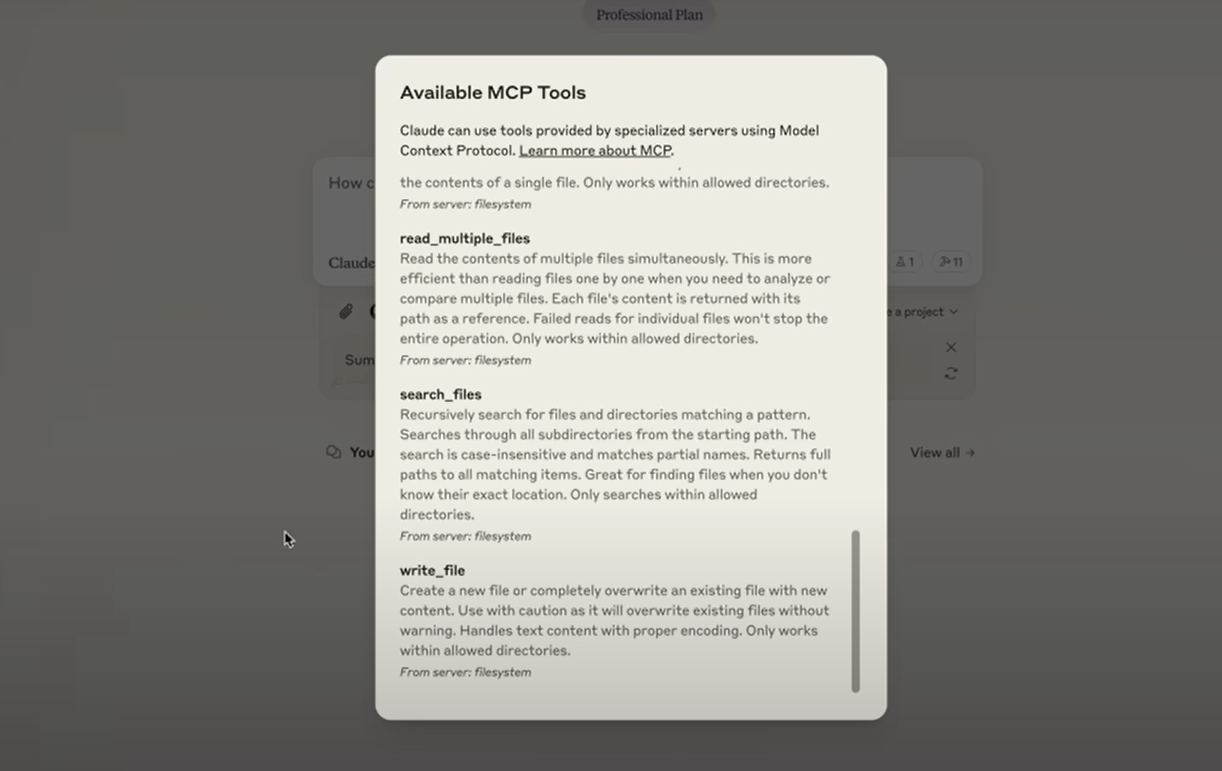
If the server isn't being recognized by Claude, proceed to the troubleshooting section.
Troubleshooting
If you encounter issues, try the following:
Restart Claude: Ensure you've completely restarted the Claude Desktop App.
Check claude_desktop_config.json syntax: Verify that the JSON syntax in your configuration file is correct. Use a JSON validator to check for errors.
Validate file paths: Make sure the file paths in claude_desktop_config.json are valid, absolute, and not relative.
Check logs: Examine the logs to identify the cause of the connection failure:
macOS: ~/Library/Logs/Claude
Windows: %APPDATA%\Claude\logs
mcp.log contains general logging about MCP connections and connection failures.
mcp-server-SERVERNAME.log files contain error logging from the named server.
Manually run the server: Try running the server manually in your command line to see if you get any errors:
npx -y @modelcontextprotocol/server-filesystem /Users/username/Desktop /Users/username/DownloadsUsing the Filesystem MCP Server
Now that you have the Filesystem MCP Server set up, you can start interacting with your local files through Claude.
1. Input a Prompt: "Create a desktop/test/hello_world.txt with 'Hello, World' as text"
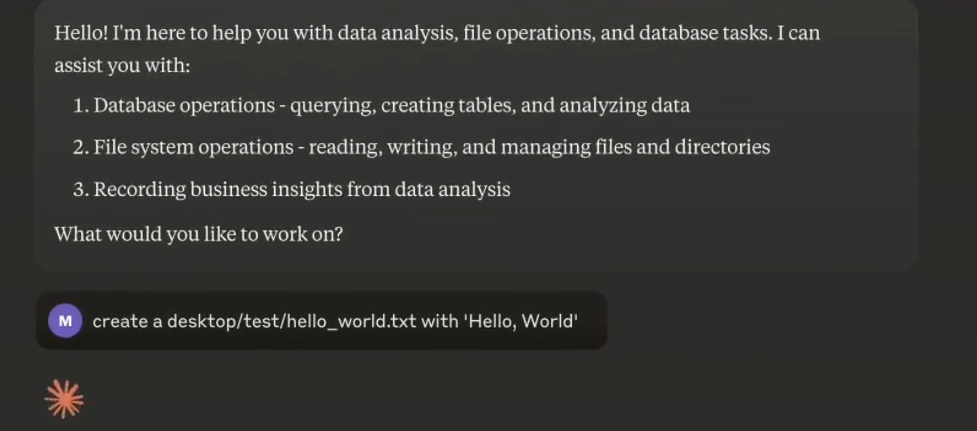
2. View the response: See how claude achives the task at hand.
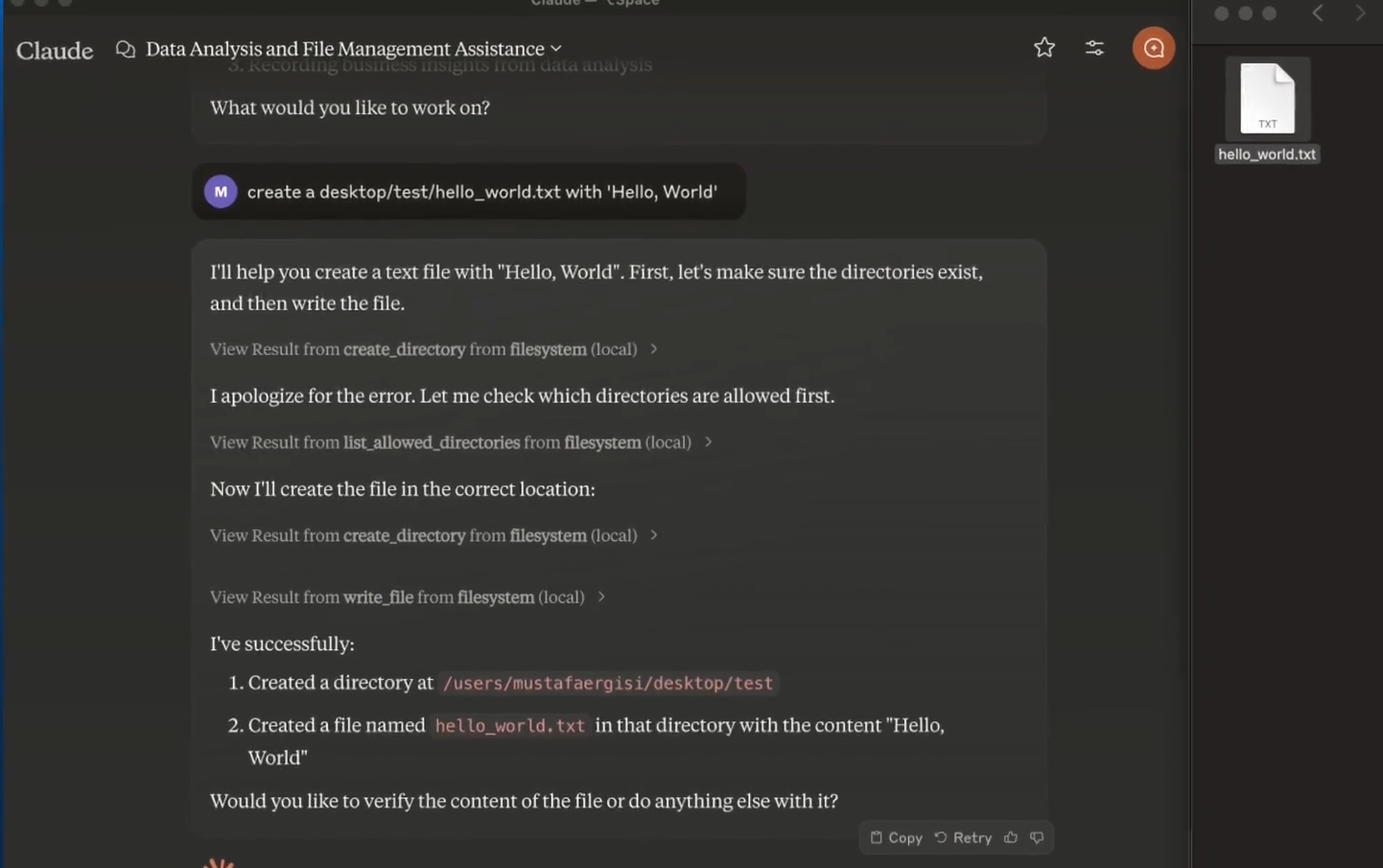
3. Verify the Results: Claude should have successfully created a .txt file with "Hello, World" as text inside.
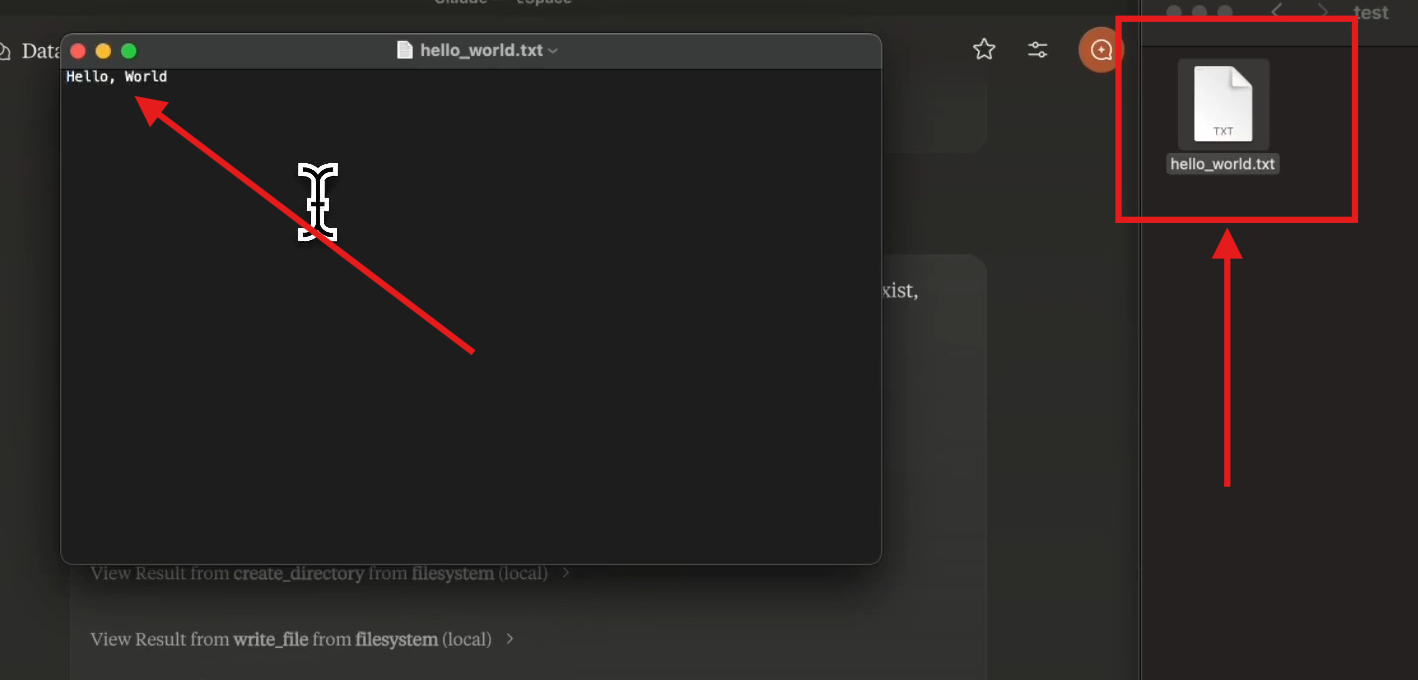
Now that you're able to access and create files directly on your local machine using the Claude desktop app, try out different prompts and discover the power of the filesystem MCP server! Here are a few examples to get you started:
i. "How many files do I have in my downloads folder."
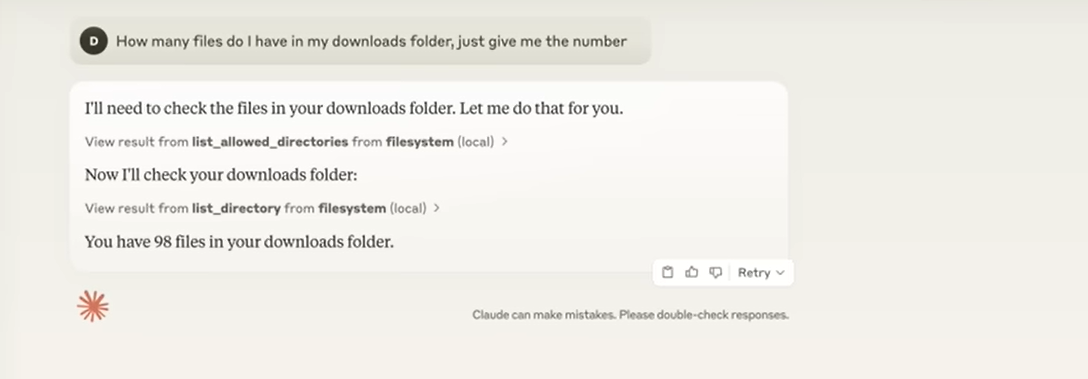
ii. "Summarize the contents of the file report.txt in my Desktop folder."
iii. "Create a new file called todo.txt in my Downloads folder and add the following tasks: [list of tasks]."
iv. "Move the file image.png from my Desktop folder to my Downloads folder."
Remember that Claude will ask for your permission before executing any actions on your file system.
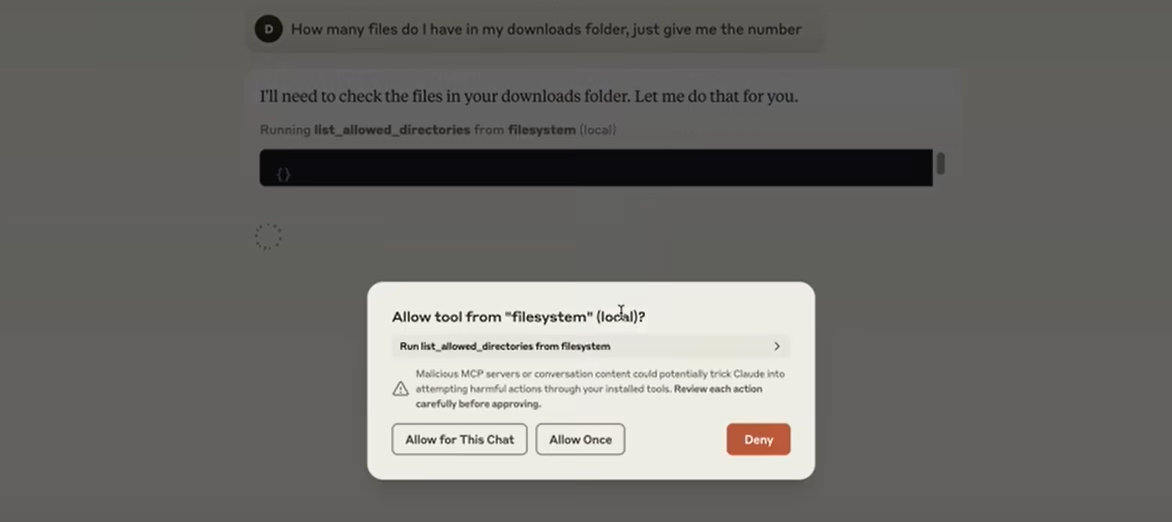
Conclusion
By integrating an MCP server with Claude, you unlock a new level of interaction with your local files, enhancing your productivity and streamlining your workflow. This setup allows you to leverage the power of AI for tasks ranging from document analysis to code editing, all while maintaining control over your data and environment. This is an amazing tutorial to get started with the Model context protocol and Claude.



